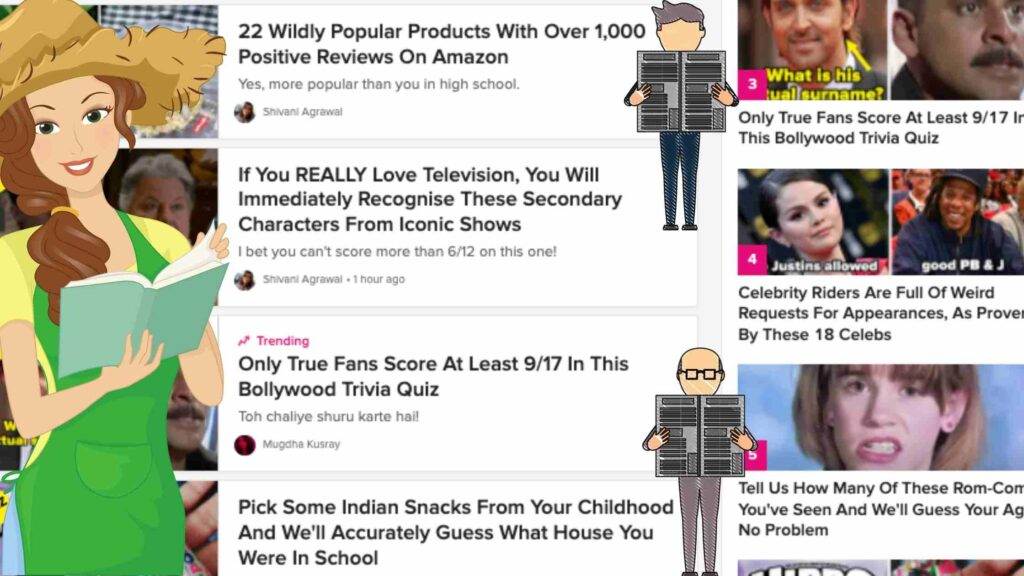If you have ever read a BuzzFeed or HuffPost article, then you know headlines play a large role in getting people to click on an article, and more importantly, share the blog post. The first thing you notice about Internet articles is the headline. It truly tells a lot about an article and can make the difference between someone reading or skipping over it. The goal of this article is to help you create a headline people can’t resist.
Ready to transform your content strategy? Our expert team delivers SEO-optimized blogs and powerful backlink strategies that drive real results.
Elevate Your Digital Presence
The 3U’s of headlines
- Unique: Don’t copy other websites or blogs. And don’t just tweak a headline. Instead, make it your own by taking your own approach and putting your own personal spin on it that reflects the benefits to the reader (not to you). It shouldn’t be too general or vague either, yet still make sense to the average person. Also, while you don’t want to copy what others have done, it can be useful to get ideas from other headlines that are generating good traffic in the same industry as yours.
- Urgent: Most people want things right now, not later so if you can help them out with that and make them feel like they’re missing out on something because they haven’t read it yet, all the better for getting results.
- Useful: You need to help readers solve a problem or teach them something valuable but keep it short and simple enough that they actually will read it. If possible, try adding links within the content of your post/email/ad, so people can click through and learn more about a certain topic you mentioned.
The one secret to good headlines
- Know your audience.
- Know what keywords you’re optimising for. It’s vital for your headline to include a keyword that people are actually searching for. To find this out, use Google’s Keyword Planner or Google Trends. Search that topic on social media and see what kind of response you get. Check out autocomplete results and related searches in Google as well (look how many articles have been written on “how to write better headlines”!). Finally, look at the ‘People Also Ask’ section in Google and make sure your topic is not already covered by another post that has gotten more traction than yours would be able to. If you don’t know which long tail keyword to use, think of keywords in terms of questions. Make sure those questions are not intended for a FAQ page instead of a blog post.
- Know what questions your audience has, and what they want to read.
- Really know your topic inside out, so you can write better headlines every time.
- Consider the competition and what they’re doing right or wrong with their headlines.
- Practice writing headlines in different styles, so you have a good sense of which ones work best for you on any given day.
How do I create effective headlines?
- Test your headline. This is a critical step to creating a compelling headline that converts. Your first idea may be good, but you can’t know for sure until you test it with real people. The best way to do this is by using the 5-second rule. In this method, show an individual your proposed headline for 5 seconds and then take it away. Ask them what they remember from it and whether or not they would click on the article based on that headline alone.
- Use data, not gut feeling when creating a headline. It’s tempting to use your instincts when determining the effectiveness of a title, but this doesn’t always lead to the best content marketing results! One way around this is by A/B testing different headlines for each article before publishing so you can see which ones perform better than others.
- Consider what information will be most important in your article. Not everyone has time or interest in reading long-form journalism pieces every day; some people just want short briefs on news they care about while others prefer more detailed versions of events happening around them – so which format should we use? The answer: neither one! Instead, we should focus on creating articles that serve both groups by providing relevant topics with detailed explanations as needed (for example: “How did climate change contribute to wildfires?”).
How do I make my content relevant to my audience?
Start by figuring out what your audience is actually looking for. This doesn’t mean you need to be a mind reader, but you do need to get into their heads as best you can. Luckily, there are tools that can help you uncover search terms and content that’s proven to resonate with them.
Start with Google Keyword Planner and Ahrefs, which will help you identify the keywords your audience is searching for and the content they’re responding to. Then try BuzzSumo, which lets you search by keyword or topic to find out what people are sharing on social media. Then use some of those keywords and topics in your headlines.
What is the best way to create engaging headlines?
- Keep the length optimal: 6-12 words. According to a BuzzSumo survey, 11 words or 65 characters are best.
- Make it relevant. If you are writing a blog post, the goal of the headline is to get people to read the blog post and take action based on what was shared. You can do this by making sure your headline is relevant and clearly indicates what people will find in your content.
- Include keywords. Keywords are words that indicate what you are talking about and they help search engines understand what your post is about. This input will help them display an appropriate snippet from the headline in search results. When writing headlines, try using two or more keywords that indicate what you are writing about and where the topic can be found (e.g., “how-to guide”). This will give readers clues and help search engines classify your page when someone searches for related subjects on Google.
- Use numbers. Numbers make things stand out because we all love lists. It’s also easy for us to remember them. This way readers know exactly how many tips there’ll be before even reading an article. They’ll probably skim less than they normally would due to this fact alone!
- Focus on benefits. Your readers want to know what they’ll learn or get by reading your blog post, so focus on benefits rather than features.
- Make it urgent. People love to read headlines such as “For 24 hours only!” or “The secret you don’t know…” The sense of urgency will drive them to click on the link and read your post.
- Use power words. You can grab people’s attention with power words such as “fast,” “free,” “easy,” or “how-to.”
- Write at least 10 ‘different’ headlines for every piece of content you create. The key here is different. If a headline sounds too similar to something else you have written, change it up and make it unique.
Study top headlines
- First, look at what others are doing.
By now, you’re probably aware that you need to study other people’s headlines. But it’s not enough to simply read them. You have to actually learn from them and apply what you learn to your content marketing efforts.
- Second, copy the best headlines without plagiarising.
The key here is to adapt proven headline formulas that work well for your specific business — while using a unique voice and identity — so it won’t look like you copied someone else’s ideas.
- Third, find headlines that hit home with you… and figure out why they worked.
Find a headline that resonates with you on an emotional level and really makes an impact on you — then think about why that is so? What makes the headline so compelling? Don’t be afraid to pull elements from multiple top-performing headlines.
Creating high-conversion titles takes time, but worth it
It’s hard to write an optimised title right off the bat — even when you’re familiar with your blog post content. Make sure to know your audience and try using tools like Hemingway Editor, the Yoast SEO plug-in or Sharethrough Headline Analyzer to help you write better headlines.
Also, don’t forget to keep testing! There are many different ways that you can do this through A/B testing, but here are some ideas:
- Changing certain words (i.e., “best” vs. “top”)
- Adding numbers (i.e., “5 Ways To…” or “10 Tips For…”)
Conclusion
Headline writing is a skill that anyone can develop. After all, if you have a website or blog, you will have to write headlines at some point in your content marketing career. The good news is that headlines can always be improved. In fact, if you’re not satisfied with the amount of traffic you get from a given article, you should try tweaking your headline. Who knows? You might attract 10 times more traffic! Great headlines aren’t just born, they’re made.


